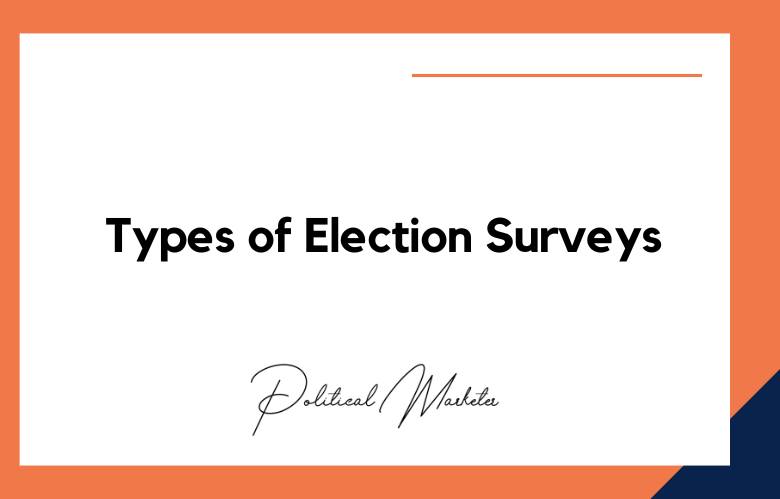Political campaigns have been relentlessly evolving over the past few years, embracing innovative technologies and tools to reach voters and win their hearts. From social media to data analytics, AI-powered chatbots, and personalized messaging, politicians have left no stone unturned to engage with constituents.
However, with the growing popularity of virtual Reality (VR), it is the next big thing that could change the face of political advertising.
We will explore the potential of VR in political campaigning and how it can be implemented for a successful campaign.
What is Virtual Reality Implementation for Political Leader Campaigns?
Virtual Reality is a continually growing trend, and its use has extended beyond just gaming. The political industry has also started looking at the potential of virtual reality implementation in their campaigns.
Virtual Reality is an immersive experience that provides a computer-generated environment that simulates the real world or an imagined one.
It can help political leaders create a unique opportunity for voters to experience their campaigns innovatively. We will further discuss the concept of Virtual Reality Implementation for Political Leader Campaigns.
How Virtual Reality is Transforming Political Leader Campaigns
The world of politics is changing, and so is how politicians campaign for office. With the advent of virtual reality technology, political leaders can now connect with their constituents in new and exciting ways.
Virtual Reality (VR) is a computer-generated simulation of a three-dimensional environment that can be experienced through special headsets or projection screens.
Political leaders increasingly use this technology to create immersive campaign experiences that transport potential voters to real-life situations. We take a deep dive into how VR is transforming political campaigns.
Virtual Reality Implementation for Political Leader Campaign – A Step Towards Better Voter Engagement
Virtual Reality is the most innovative technology of recent times. Its immersive and interactive nature has the power to engage people in an unparalleled way.
Political campaigns are essential to democracy, and voter engagement is the key to success.
Virtual Reality can be crucial in engaging voters better and more effectively. Explores how virtual reality implementation for political leader campaigns can be a step towards better voter engagement.
Best Practices for Virtual Reality Implementation for Political Leader Campaigns
Immersive Experience for Voters
The most significant advantage of VR technology is that it has the potential to create an immersive experience for users.
It transports them to a completely different environment and allows them to experience things differently.
Political leaders can leverage this feature to showcase their vision, values, and policies to voters. For example, imagine a virtual rally where voters feel like standing in a vast crowd, listening to the leader’s speech, and interacting with the people around them.
This could be a game-changer in political advertising, creating a more intimate and personalized experience for voters.
Targeting the Younger Demographic
The younger population is increasingly using VR technology for gaming and entertainment purposes.
By leveraging this trend, political campaigns can reach out to this demographic by creating engaging VR content that resonates with their values and aspirations.
For example, a political party can create a VR game that educates the players about the policies and values of the party.
This could be a highly effective way of creating awareness and engagement among young voters who are otherwise disinterested in politics.
Cost-Effective and Scalable
VR technology has come a long way in recent years and is now more accessible and cost-effective than ever.
Developing VR content for political campaigning, although still a new trend, can be a cost-effective and scalable campaign option.
It allows campaigners to reach a broader audience without spending a fortune on traditional advertising.
Moreover, VR content can be easily adapted and customized to suit the needs of different regions, demographics, and issues.
Ethical Concerns and Challenges
While VR technology holds immense potential for political campaigns, it raises ethical concerns and challenges. For example, how do you ensure the VR content is not manipulated or misrepresented to sway voters?
How do you guarantee the privacy and security of the data collected through VR? Moreover, there is a risk of creating an echo chamber effect, where voters are only exposed to content that aligns with their beliefs and biases.
Campaigners must be mindful of these challenges and ensure their VR content is transparent, factual, and unbiased.
Integrating VR with Other Campaign Strategies
Lastly, VR technology should be seen as an additional tool in the political campaign toolkit rather than a standalone approach.
The success of a political campaign depends on various factors such as messaging, branding, ground-level campaigning, and fundraising.
VR technology can be integrated with these strategies to create a more holistic and effective campaign.
For example, a political party can use VR content to promote fundraising events, increase engagement on social media, and enhance the impact of on-ground rallies.
Virtual Reality in Political Campaigns: A New Era of Voter Engagement
In recent years, Virtual Reality (VR) has revolutionized the business world, the entertainment industry, and healthcare.
But did you know VR has also become a game-changer in political campaigns? VR is not just a futuristic concept anymore, it’s more than just a VR headset.
Today, it’s the ultimate solution to reach out to more potential voters and spread your message effectively. We will discuss how political leaders can implement Virtual Reality to win campaigns.
Virtual Rallying
Imagine holding a political rally without leaving the house. That’s what Virtual Rallying is all about. With VR devices, anyone can join a political rally from the comfort of their home.
No more long queues, waiting in the hot sun, or even travel. Virtual Reality rallies eliminate the need for physical presence, opening up rallies to voters who could not attend previously.
This goes a long way in ensuring that political leaders engage with more people, and it’s a cost-effective solution compared to organizing multiple rallies across the country.
Virtual Reality Fundraising
Fundraising is an essential aspect of any political campaign. However, it takes work to convince donors to give their hard-earned money without seeing what they support.
This is where VR comes in. Virtual tours of campaign headquarters, video testimonials of the candidate, and virtual reality donor dinners have become popular among potential donors.
Not only does this provide a unique experience, but it also gives donors an in-depth look at the candidate’s campaign message and objectives.
Virtual Reality is the Ultimate Educational Tool
Politicians can use VR technology to create immersive simulations highlighting policy proposals and debates.
For example, political leaders can create VR debate scenarios that simulate real-world circumstances to educate voters on how they’re poised to deliver their objectives.
With VR experiences, candidates can show voters exactly how they plan to execute their policies, giving voters a sense of trust, transparency, and accountability.
Virtual Reality Door-to-Door Campaigning
Door-to-door campaigning is a traditional way of reaching out to voters. Virtual Reality, on the other hand, is the future of door-to-door campaigning.
Candidates can utilize VR to create personalized virtual reality door-to-door campaigns to reach more voters.
They can simulate the challenges that voters face, show voters a glimpse of life under their policies, and convince them why they’re the best candidates for them.
Virtual Reality makes it easy for candidates to create personalized campaigns focusing on voters’ concerns, ensuring they feel heard and supported.
Virtual Reality Voter Registration
Lastly, candidates can utilize VR to boost voter registration. All it takes is creating a VR experience that guides voters through easy registration.
A VR voter registration experience can provide essential information on relevant documentation, deadlines, and even the date of the next election. It’s simple yet sophisticated, and it gets the job done.
Conclusion
Virtual Reality is a disruptive technology that can change the face of political advertising. It offers an immersive experience, reaches out to younger voters, and is cost-effective and scalable.
However, it also poses ethical challenges and needs to be integrated with other campaign strategies for maximum impact. As political campaigns become increasingly competitive and dynamic, VR implementation can give campaigns the edge they need to win the hearts and minds of voters.
Call: +91 9848321284
Email: [email protected]
Virtual Reality Implementation for Political Leader Campaign: FAQs
What Is Virtual Reality In The Context Of Political Campaigns?
Virtual reality in political campaigns refers to the use of immersive, computer-generated environments that allow voters to experience campaign messages, candidate interactions, or issue-based simulations in an engaging, lifelike format.
Why Should Political Leaders Use Virtual Reality?
VR creates emotionally powerful, memorable experiences that can increase engagement, build empathy, and make complex political issues more accessible to voters.
How Can VR Be Used In Political Campaigning?
VR can be used for virtual town halls, campaign rally simulations, behind-the-scenes access, policy walkthroughs, or interactive storytelling that connects voters with real-world impacts.
Is VR Effective For Voter Engagement?
Yes. VR’s immersive nature can drive deeper emotional engagement, higher message retention, and a stronger personal connection between the voter and the candidate.
What Are The Benefits Of VR Over Traditional Media In Campaigns?
VR offers 360° storytelling, immersive interaction, and controlled environments that increase focus, empathy, and understanding of issues without distractions.
How Expensive Is It To Implement VR In A Political Campaign?
While production costs vary, VR can be cost-effective when targeted for high-impact experiences like donor events, influencer outreach, or youth voter engagement.
Can VR Help Voters Understand Policy Better?
Yes. Policy simulations in VR—such as walking through a proposed development or experiencing healthcare facilities—make abstract policies tangible and relatable.
What Is The Role Of VR In Virtual Town Halls?
VR town halls let voters feel present in a shared virtual space, ask questions, and interact with the candidate in real time, even from remote locations.
How Do Political Teams Distribute VR Content To Voters?
Content can be delivered via VR headsets, mobile VR apps, 360° YouTube videos, and social platforms that support interactive or immersive experiences.
Can VR Be Used For Political Training Or Volunteer Mobilization?
Yes. VR can simulate canvassing, voter persuasion training, or scenario-based learning for volunteers and campaign staff.
What Kind Of Stories Work Best In VR For Political Messaging?
Narratives that evoke empathy, show transformation, highlight community impact, or place the viewer in someone else’s shoes work exceptionally well in VR.
Is Special Hardware Required For Political VR Experiences?
While high-end VR needs headsets like Meta Quest or HTC Vive, simplified versions can run on smartphones using Google Cardboard or 360° web integration.
How Can VR Be Integrated Into A Campaign’s Digital Strategy?
VR should complement existing strategies—used during peak campaign moments, for key demographics, or to enhance emotional storytelling in social and email outreach.
What Demographics Are Most Responsive To VR Campaigning?
Younger voters, tech-savvy individuals, and urban populations tend to be more responsive, but well-crafted content can resonate broadly.
How Can VR Be Used In Fundraising Efforts?
Exclusive VR content for donors—such as private briefings, candidate journeys, or immersive impact videos—can increase emotional buy-in and contributions.
What Are The Security Concerns With VR Campaign Content?
Security issues include data collection, user privacy, unauthorized recording, or deepfake misuse; all of which must be addressed with strict data policies.
Can VR Help Build A Candidate’s Personal Brand?
Yes. VR allows leaders to appear more relatable, forward-thinking, and accessible by showing authentic moments and values in an immersive format.
What Role Does Analytics Play In VR Political Campaigns?
Campaigns can track user engagement, time spent, emotional response, and call-to-action completion to optimize messaging and outreach.
Are There Real-World Examples Of VR In Politics?
Yes. Politicians in the U.S., U.K., and South Korea have used VR for virtual rallies, empathy-driven issue simulations, and donor engagement campaigns.
Is VR The Future Of Political Communication?
While still emerging, VR is increasingly becoming a powerful storytelling and engagement tool that complements traditional digital strategies in modern political campaigns.










